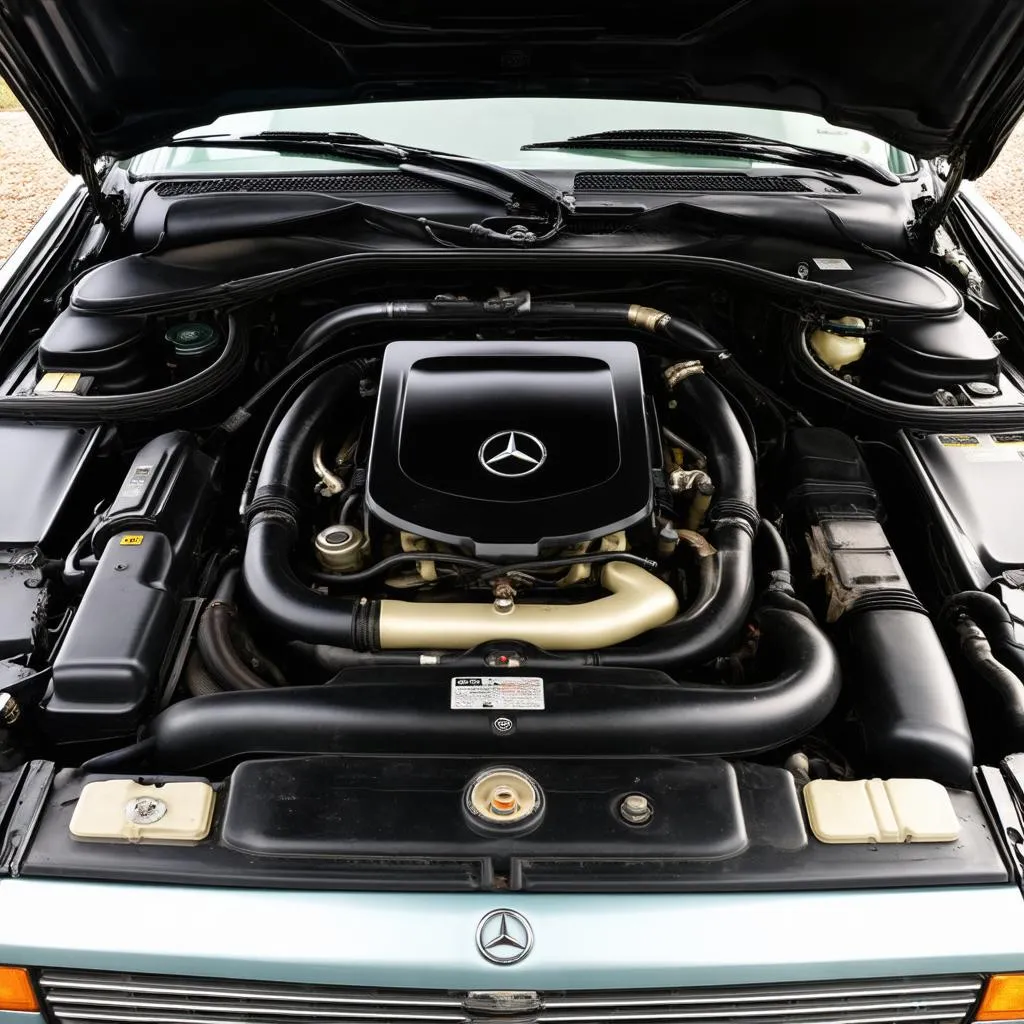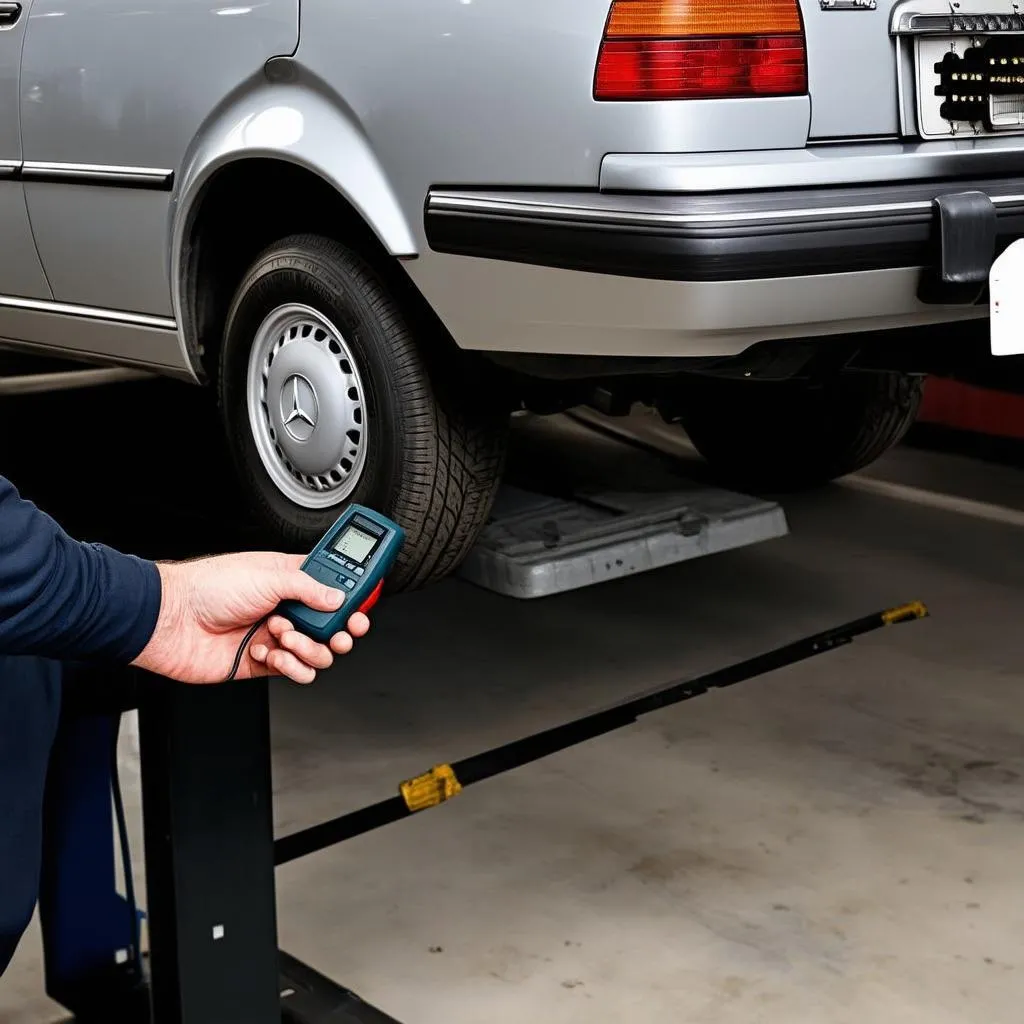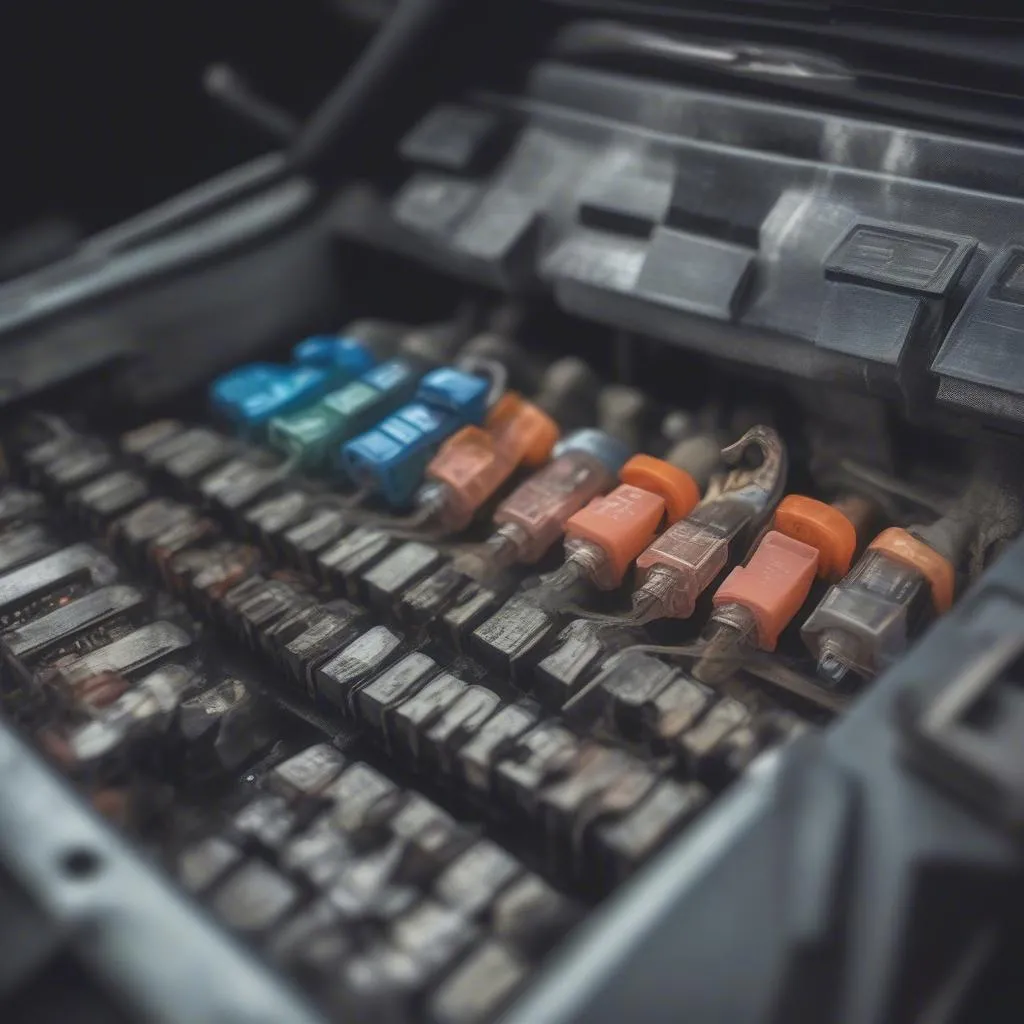Owning a classic Mercedes 300D is a thing of beauty, but even these automotive masterpieces can have their bad days. When your 1987 300D throws a temper tantrum, you’ll want to diagnose the problem quickly. But where do you even start? The answer lies in the often elusive diagnostic port.
This article will guide you through locating the diagnostic port on your 1987 Mercedes 300D and provide essential information on understanding its role in troubleshooting.
Where is the Diagnostic Port on a 1987 Mercedes 300D?
Unlike modern cars with standardized OBD-II ports, your 1987 300D has a unique diagnostic connector. It’s a round, 6-pin connector located under the hood, typically on the driver’s side near the firewall.
“On these older Mercedes models, the diagnostic connector is often hidden from plain sight. You might need to move aside some plastic covers or wiring harnesses to find it,” explains Mark Stevenson, a seasoned Mercedes mechanic with over 20 years of experience.
Understanding the Diagnostic Port’s Role
This port, though seemingly simple, is your gateway to understanding your car’s electronic brain. By connecting a compatible diagnostic tool, you can:
- Read and interpret engine fault codes: These codes are your car’s way of telling you what’s wrong.
- Monitor live data streams: Access real-time information from various sensors, like engine speed, coolant temperature, and fuel pressure.
- Perform actuator tests: Activate components like fuel injectors or the EGR valve to pinpoint malfunctions.
What Diagnostic Tools Work with a 1987 Mercedes 300D?
While modern OBD-II scanners won’t work with your 300D, several options are available:
- Mercedes-Benz specific scanners: These tools offer the most comprehensive diagnostic capabilities but often come with a hefty price tag.
- Aftermarket scanners: Several reputable brands cater specifically to older Mercedes models, providing a balance of features and affordability.
Tip: When choosing a diagnostic tool, ensure it explicitly states compatibility with your 1987 300D model.
 1987 Mercedes 300D Engine Bay
1987 Mercedes 300D Engine Bay
Common Issues and Diagnostic Port Insights
Here are some frequent problems with the 1987 300D and how the diagnostic port can help:
Problem: Engine won’t start
Diagnostic Port Insight: Connect a scanner to check for fault codes related to the fuel system, ignition system, or sensors like the crankshaft position sensor.
Problem: Black smoke from the exhaust
Diagnostic Port Insight: Monitor fuel injection timing and air intake values to diagnose potential issues with the fuel-air mixture.
Problem: Transmission shifting problems
Diagnostic Port Insight: Some scanners can read transmission fault codes, providing clues about solenoid issues or fluid pressure problems.
 Mechanic Diagnosing a 1987 Mercedes 300D
Mechanic Diagnosing a 1987 Mercedes 300D
FAQs about the 1987 Mercedes 300D Diagnostic Port
Can I use a generic OBD-II scanner on my 1987 300D?
No, OBD-II scanners are not compatible with your vehicle. You need a scanner specifically designed for older Mercedes models.
Where can I find a reliable diagnostic tool for my car?
You can find suitable scanners online, at auto parts stores, or through specialized Mercedes-Benz tool suppliers like Cardiagtech.
Can I diagnose and fix any problem using the diagnostic port?
The diagnostic port is a powerful tool, but it won’t solve every problem. Some issues may require a mechanic’s expertise and specialized tools.
Conclusion
Understanding how to use the diagnostic port on your 1987 Mercedes 300D is essential for any DIY mechanic or owner who wants to stay ahead of potential issues. While finding and connecting to this port might be different from modern cars, the information it provides can be invaluable.
For more information on diagnostic tools compatible with your 1987 Mercedes 300D, consider exploring the range of products offered by CARDIAGTECH. They specialize in diagnostic solutions for various car models, including classic Mercedes-Benz vehicles.


